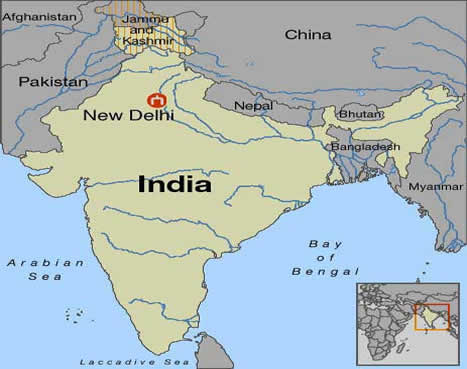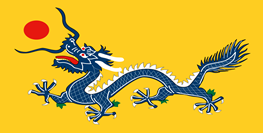


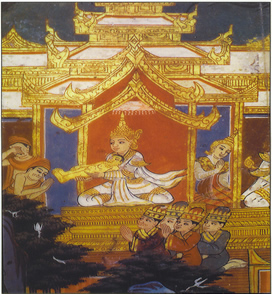
Buddha's Birth in Ancient India
| SILK ROAD STOP: DELHI (INDIA) |
|
India & Buddhism
In the 500's BC, during the later part of the Aryan period in India, the idea of reincarnation became very strong among Hindus. Most people believed that after you died, you would be reborn in another form, and then reborn again, and again, forever. But then people started to not like this idea. They didn’t want reincarnation to just go on and on forever. Wasn’t there any way to stop this; to get off the wheel of reincarnation and just be?
A young Indian prince named Siddhartha Gautama Buddha had an idea. He thought that you could get off the wheel of reincarnation if you were good and pure enough. He refused to be a prince anymore, and tried to spend his life being good and pure so he could get off the wheel. Gautama Buddha had many followers during his lifetime, and after he died he had even more. Most of Buddha's followers tried to be good while still living their normal lives - working in the fields or as soldiers, getting married, taking care of their parents and their children. But some of his followers adopted a Jain idea of getting away from the world so they could work full-time on being good and pure. These people were called monks or nuns.
In the 300’s BC, one of the great Mauryan kings, Asoka, became a Buddhist, which helped Buddhism to succeed. Asoka convinced many other Indian people to become Buddhists.
At first, most Buddhists were in India. But by 500 AD Buddhism spread to China and other parts of East Asia. By the 600’s AD most of the Buddhists in India had gone back to being Hindus again. They still remembered Buddha, but as one of many Hindu gods.
In China, on the other hand, Buddhism got stronger and stronger. Soon most of the Buddhists were in China and not India. In China, as in India, most Buddhist people continued to lead more or less ordinary lives, but some Buddhist men and women left their jobs and their families in order to live in Buddhist monasteries as monks or nuns. (History for Kids)
| India Slideshow |
|
Click here for larger screen version
|
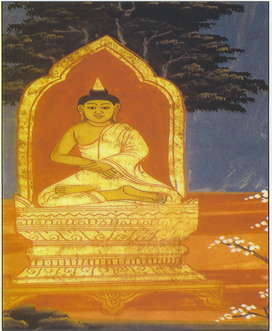
Buddha achieves enlightenment under the Bodhi Tree
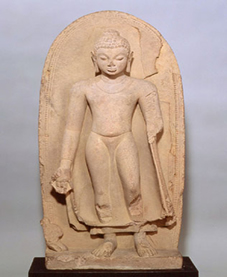
Sandstone Buddha in Uttar Pradesh, India 6th century
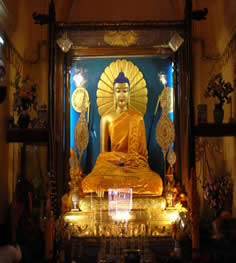
Golden Buddha statue in India
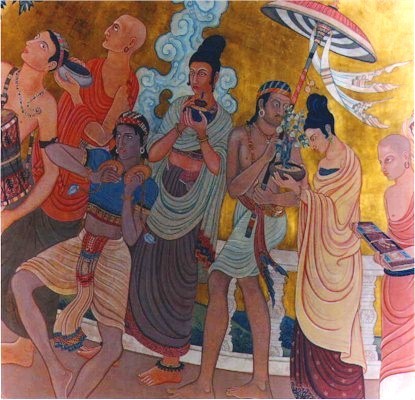
Emperor Ashoka sends his daughter to spread Buddhism
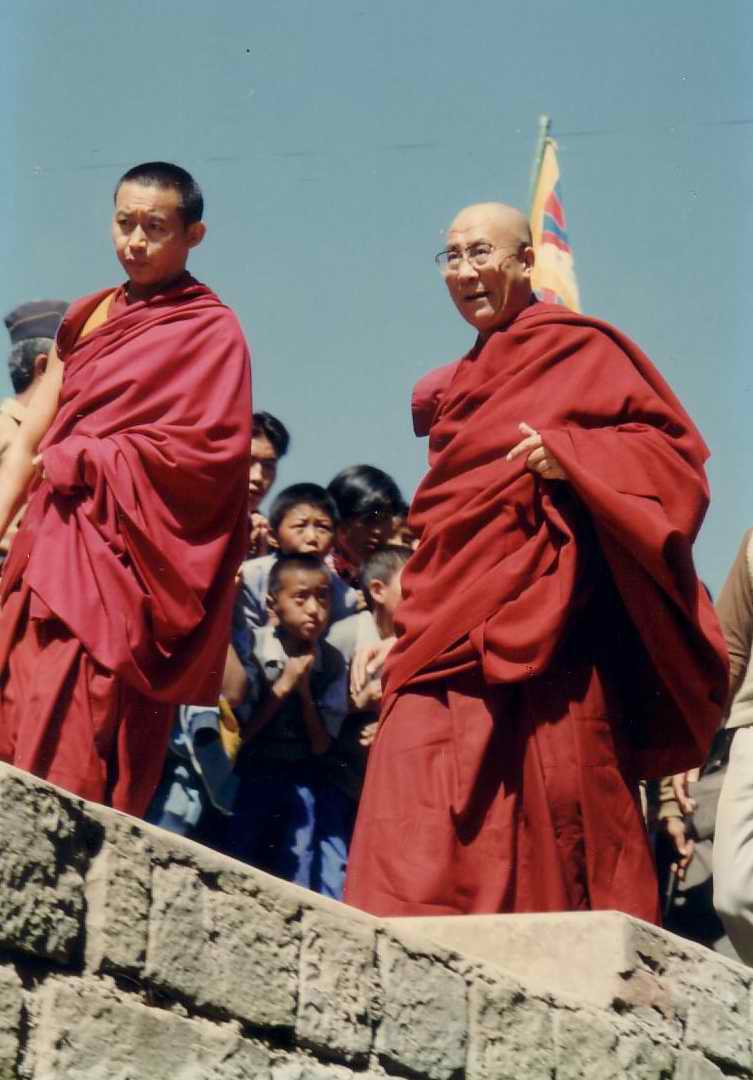
14th Dalai Lama in India
Buddhism
Buddhism, which originated in India during the fifth century B.C.E., was gradually introduced into China through Central Asia via the Silk Road. Buddhism, which entered China during the Han dynasty, was influenced by other religions that wer present in Central Asia at that time. Once in China, Buddhism was combined, for a time, with another poular Chinese belief system, Daoism. In fact, until the end of the han dynasty, the two belief systems were virtually one and shared many beliefs. The early statues of Chinese Buddhas resembled the statues of Indian Buddhas from the fourth to fifth centuries B.C.E., but have some different features. (History Alive)
Click here for large screen version
Buddhism became widely accepted in China by the 4th century. One of the very first Chinese travelers was a Buddhist monk named Xuan Zang. He went on a long journey to India in the 7th century to bring back some Buddhist scriptures to translate them to Chinese. Today Buddhism is not as widespread as it was in the past, statue in the Great Wild Goose Pagoda. This is a monument built for the scriptures that Xuan Zang brought from India.
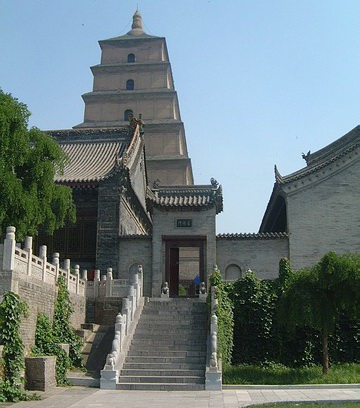
Great Wild Goose Pagoda (Built for the scriptures that Xuan Zhang carried from India)
Today
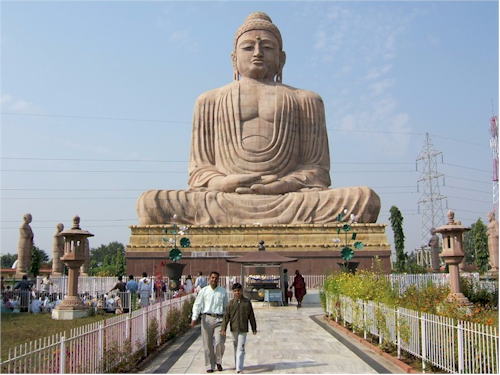
80' Buddha in Bodhgaya, India built in 1985
Video: Religions of the World - Buddhism
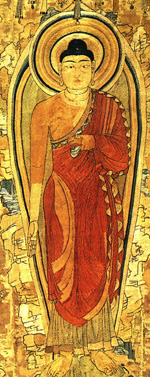
Silk banner of Buddha found in the Magao Caves in Dunhuang
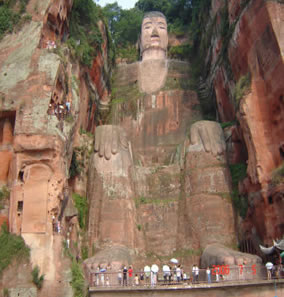
Leshan Giant Buddha in Leshan, China
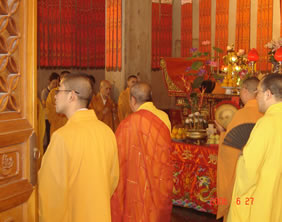
Buddhist Monks at Jing'an Temple, Shanghai
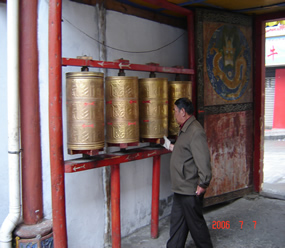
Buddhist Temple Prayer Wheels in Kangding, China
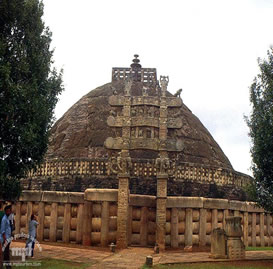
Great Stupa in Pradesh India
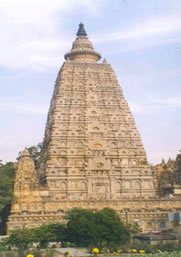
Stupa at Bodhgaya
Buddhist Architecture
When the Buddhist religion was introduced to China through the Silk Road from India around the first or second century C.E., Buddhist architecture accompanied it. Chinese monks, who traveled to distant lands where Buddhism was practiced, returned home to describe the wonders of giant Buddhist temples that spiraled toward the sky. In earlier times, the Chinese people had built their own style of temple - called a pagoda which were multistory building made of wood. After Buddhism reached China, the Chinese adapted the Indian architectural style, and built pagodas. The pagoda's design imitates the curve of the Indian sikhara tower. Over time, the Chinese constructed stone and brick pagodas that combined many Indian elements with the style of earlier Chinese structures. (History Alive)
Buddhist Architecture Today
Event today within the major city of Shanghai, China with skycrapers and modern buildings all around, the newly renovated Jing'an Buddhist Temple (below) was built in traditional style.
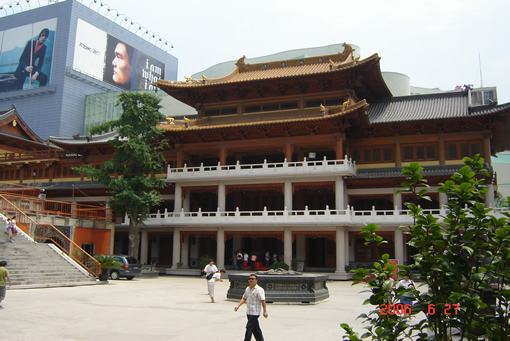
Jing'an Buddhist Temple in Shanghai, China
Supplemental Lessons:
Discovering Buddha's Path to Enlightenment

Pagoda in Fengdu, China
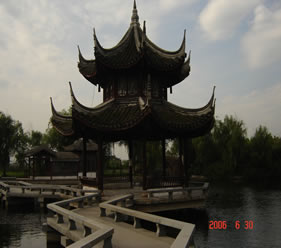
Quanfu Pagoda in Zhouzhuang, China
